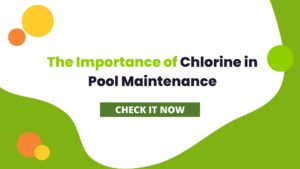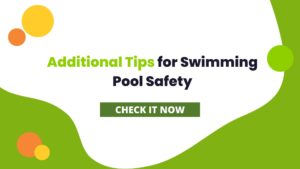Having a clean and properly maintained swimming pool is essential for the enjoyment and health of swimmers. Chlorine is a widely used chemical in pool maintenance due to its effective disinfection properties. However, many pool owners wonder how long they should wait after adding chlorine before it is safe to swim.
In this article, we will explore How Long After Putting Chlorine in Pool Can You Swim?
Additionally, we will discuss the importance of testing chlorine levels and offer tips for maintaining a safe and enjoyable swimming environment.
If you are in a hurry Here is Short Answer
The recommended waiting time typically ranges from 30 minutes to 1 hour. This allows the chlorine to distribute evenly throughout the pool and ensures that the water is adequately sanitized.
But if you are looking to check in details,
1.Important of chlorine,
2.How Chlorine Works to Disinfect the Pool
3.Factors Affecting Chlorine Dissipation
The Lets move on further

Table of Contents
ToggleThe Importance of Chlorine in Pool Maintenance
Chlorine plays a crucial role in maintaining a clean and healthy swimming pool. It acts as a powerful disinfectant, eliminating harmful bacteria, viruses, and other contaminants that can pose a risk to swimmers. By effectively sanitizing the water, chlorine helps prevent the spread of waterborne illnesses and keeps the pool safe for recreational use.
How Chlorine Works to Disinfect the Pool
Before understanding the waiting time after adding chlorine, it is important to grasp how chlorine works to disinfect the pool. When chlorine is added to the water, it forms hypochlorous acid (HOCl) and hypochlorite ions (OCl-). These compounds act as sanitizers by attacking and destroying microorganisms present in the pool. The concentration of these compounds determines the effectiveness of chlorine in disinfection.
Factors Affecting Chlorine Dissipation
The waiting time after adding chlorine to the pool depends on several factors that influence the dissipation of chlorine. Understanding these factors is crucial for ensuring safe swimming conditions.
Sunlight Exposure
Sunlight can accelerate the dissipation of chlorine in pool water. Ultraviolet (UV) rays break down chlorine molecules, reducing their concentration over time. Higher levels of sunlight exposure can lead to faster chlorine dissipation, requiring more frequent additions of chlorine to maintain proper sanitization.
Temperature
Water temperature also affects the rate at which chlorine dissipates. Warmer water tends to promote faster chlorine degradation compared to colder water. Therefore, during hot summer months, pool owners may need to add chlorine more frequently to compensate for the increased dissipation caused by elevated temperatures.
Pool Usage
The frequency and intensity of pool usage can impact chlorine dissipation. More swimmers in the pool introduce additional contaminants that chlorine needs to neutralize. Regular pool usage and higher bather loads may require more frequent chlorine additions to maintain optimal disinfection.

How Long After Putting Chlorine in Pool Can You Swim?
After adding chlorine to the pool, it is important to wait for the chemical to disperse and reach its appropriate concentration before allowing swimmers in the water. The recommended waiting time typically ranges from 30 minutes to 1 hour. This allows the chlorine to distribute evenly throughout the pool and ensures that the water is adequately sanitized.
However, it is essential to note that the waiting time can vary depending on the specific circumstances and the type of chlorine used. Some chlorine products may have specific instructions on the label regarding the waiting time. It is always advisable to follow the manufacturer’s guidelines for the particular chlorine product being used.
Testing Chlorine Levels
Regular testing of chlorine levels is crucial for maintaining a safe and healthy swimming environment. Testing helps ensure that the chlorine concentration is within the recommended range for effective disinfection.
Importance of Regular Testing
Testing the chlorine levels allows pool owners to monitor the effectiveness of their pool’s sanitization. Low chlorine levels can result in inadequate disinfection, while high levels can be harmful to swimmers. Regular testing helps identify any imbalances promptly, allowing for necessary adjustments to maintain optimal chlorine levels.
Ideal Chlorine Levels
The ideal chlorine level for most swimming pools is between 1 and 3 parts per million (ppm). This range provides effective sanitization while minimizing the risk of skin and eye irritation for swimmers. Regular testing with a reliable pool water testing kit will help determine if the chlorine levels are within the desired range.
Balancing Other Chemicals
Maintaining proper water chemistry is not limited to chlorine alone. It is essential to balance other chemicals in the pool to ensure a safe and comfortable swimming experience.
pH Levels
The pH level of the pool water should be maintained within the recommended range of 7.2 to 7.6. Proper pH balance is important as it affects the effectiveness of chlorine. If the pH is too high or too low, chlorine becomes less effective in disinfection. Regular testing and adjustment of pH levels are necessary to ensure optimal chlorine performance.
Total Alkalinity
Total alkalinity acts as a buffer for pH levels and helps stabilize the water chemistry. The recommended range for total alkalinity is typically between 80 and 120 ppm. Maintaining proper alkalinity levels helps prevent fluctuations in pH and ensures the effectiveness of chlorine.
Calcium Hardness
Calcium hardness refers to the level of dissolved calcium in the pool water. The ideal range for calcium hardness is between 200 and 400 ppm. Proper calcium hardness levels help prevent corrosion of pool equipment and surfaces, ensuring the longevity of the pool.

Additional Tips for Swimming Pool Safety
In addition to maintaining appropriate chlorine levels and water chemistry, there are other essential practices to ensure swimming pool safety.
Showering Before Swimming
Encouraging swimmers to shower before entering the pool helps minimize the introduction of contaminants into the water. Showering removes sweat, oils, and personal care products that can react with chlorine and create harmful byproducts. It is a simple yet effective step in maintaining water quality.
Avoiding Pool Contamination
Educating swimmers about good hygiene practices is important to prevent pool contamination. Encourage individuals with illnesses, open wounds, or gastrointestinal issues to avoid swimming until they are fully recovered. This reduces the risk of spreading infections and maintains a healthier swimming environment for everyone.
Proper Pool Maintenance
Regular pool maintenance, including skimming debris, cleaning filters, and maintaining proper circulation, is crucial for optimal pool hygiene. A clean and well-maintained pool requires less chlorine and ensures a safer swimming experience.
Conclusion
In conclusion, the waiting time after adding chlorine to a swimming pool before it is safe to swim typically ranges from 30 minutes to 1 hour. This allows the chlorine to disperse and reach its appropriate concentration for effective disinfection. However, it is important to follow the specific guidelines provided by the chlorine product manufacturer, as waiting times can vary.

